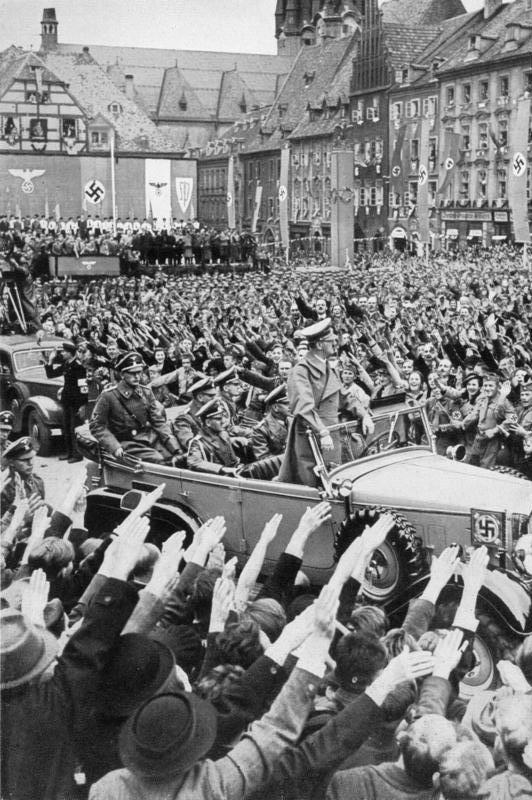Adolf Hitler in October, 1938, entering the Sudetenland. The Sudetenland region of Czechoslovakia (today the separate countries of Slovakia and the Czech Republic) had a sizeable German population. Provisions of the Munich Agreement allowed Germany to annex the Sudetenland.
The German annexation of the Sudetenland in 1938 was a pivotal event leading up to World War II, exemplifying Adolf Hitler's aggressive expansionist policies and the policy of appeasement adopted by Western powers. The Sudetenland, a region of Czechoslovakia (now the Czech Republic and Slovakia) with a significant ethnic German population, became a focal point of Nazi propaganda, which claimed that ethnic Germans were being persecuted by the Czechoslovak government.
Hitler's demands for the Sudetenland were framed as a quest for self-determination for ethnic Germans, but in reality, they were part of his broader strategy to dismantle Czechoslovakia and expand German territory. The crisis escalated throughout 1938, raising fears of a new European conflict. British Prime Minister Neville Chamberlain and French Premier Édouard Daladier, desperate to avoid war, sought a diplomatic solution.
This led to the Munich Conference, held on September 29-30, 1938, where leaders of Germany, Italy, Britain, and France met to address the Sudeten crisis. Notably, Czechoslovakia was excluded from the negotiations, despite being the most directly affected party. The Munich Agreement, reached at the conference, allowed Germany to annex the Sudetenland in exchange for Hitler's promise not to pursue further territorial expansion.
Chamberlain returned to Britain proclaiming he had secured "peace for our time," but the Munich Agreement is now widely regarded as a failed act of appeasement. The annexation of the Sudetenland not only emboldened Hitler but also significantly weakened Czechoslovakia, stripping it of its defensive fortifications and industrial resources.
In March 1939, Hitler violated the Munich Agreement by occupying the rest of Czechoslovakia, demonstrating that his ambitions extended far beyond the Sudetenland. This aggressive move made clear the futility of appeasement and set the stage for the outbreak of World War II later that year. The annexation of the Sudetenland remains a stark reminder of the dangers of yielding to aggressive powers and the catastrophic consequences of failing to stand up to expansionist totalitarian regimes.
|





















































